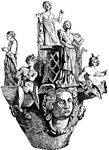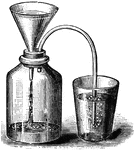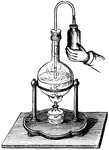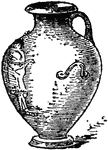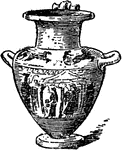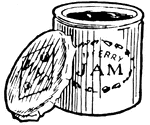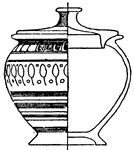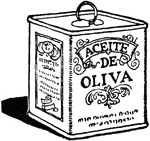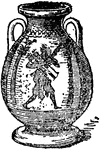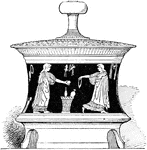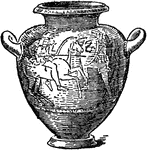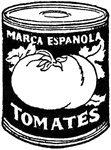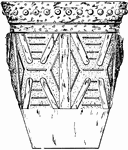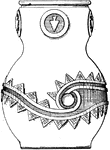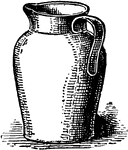Clipart tagged: ‘jar’

Amphora
"A jar with two handles; Among the Greek and Roman, a vessel, usually tall and slender having two handles…
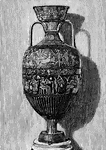
Amphora
"A jar with two handles; Among the Greek and Roman, a vessel, usually tall and slender having two handles…

Amphora
Amphoræ are jars with narrow necks and two handles, used by ancient Greeks for transporting oil…

Amphora
Amphoræ are jars with narrow necks and two handles, used by ancient Greeks for transporting oil…

Amphora
Amphoræ are jars with narrow necks and two handles, used by ancient Greeks for transporting oil…

Battery
"The term battery is applied either to a single jar, or cell, containing the generating materials, or…

Bean Plant in Jar
"The bean with its roots in unboiled water will grow for a considerable time, as long as the mineral…
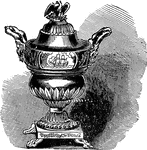
The Biddle Urn
During the War of 1812, James Biddle was first lieutenant in USS Wasp. He led the boarding party against…
Kinnersley electrical air-thermometer
"Various methods have been devised for measuring electrostatic quantity, one of the simplest of which…
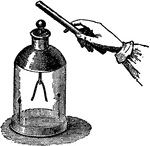
Gold Leaf Electroscope
"Gold leaf electroscope; it consists of two strips of gold foil suspended from a brass rod within a…

Faraday Experiment
"Faraday used in his experiments two identical pieces of apparatus, which were vertually two spherical…
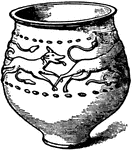
Jar
An illustration of a "jar of Castor ware with reliefs of a stag pursued by a hound, executed in semi-fluid…
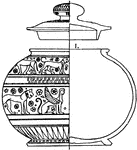
Antique Jar
This antique jar is made out of yellow clay and painted in brown and red. It is called the "Dodwell…

Leyden Jar
"The most common and, for many purposes, the most convenient form of condenser is the Leyden jar. This…

Modern Japanese Jar
This modern Japanese jar is made designed with the colors of lacquered gold and black. The lid forms…

Old Persian Jar
This old Persian jar is made with a repousse copper technique. It is a metalworking technique shaped…

Lanes Jar
"D is a Leyden jar, fastened to a stand in such a way that its outer armature can be insulated or connected…
!["...or in a number of [leyden] jars connected together as a Leyden battery." -Atkinson 1903](https://etc.usf.edu/clipart/35700/35716/leybatt_35716_mth.gif)
Leyden Battery
"...or in a number of [leyden] jars connected together as a Leyden battery." -Atkinson 1903
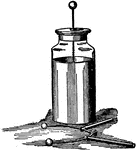
Leyden Jar
"The Leyden jar and discharger. Its discovery is attributed to the attempt of Musschenbrock and his…

Leyden Jar
"...consists of a glass jar coated inside and outside with tinfoil, or some other thin sheet metal,…

Leyden Jar Connected to Terminals
"Then connect a Leyden jar to the terminals, as shown." -Avery 1895

Diagram of a Leyden jar
"The most common and, for many purposes, the most convenient form of condenser is the Leyden jar. This…
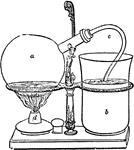
Napier's Coffee Apparatus
"This coffee apparatus consists of a glass globe a, an infusing jar b, of glass or porcelain and a bent…

Olla
"A vessel of any material, round and plain, and having a wide mouth: a pot; a jar. The following woodcut…

Bottle Type Vase
The vase is an open container, often used to hold cut flowers. It can be made from a number of materials…
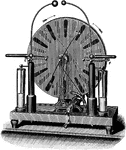
Whimhurst Machine
Two oppositely rotating glass discs connected to seperate Leyden jars generate electricity. -Atkinson…
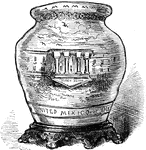
White House Turned Upside Down
Potter designs a jar with the White House turned upside down and the United Mexico of America at the…
